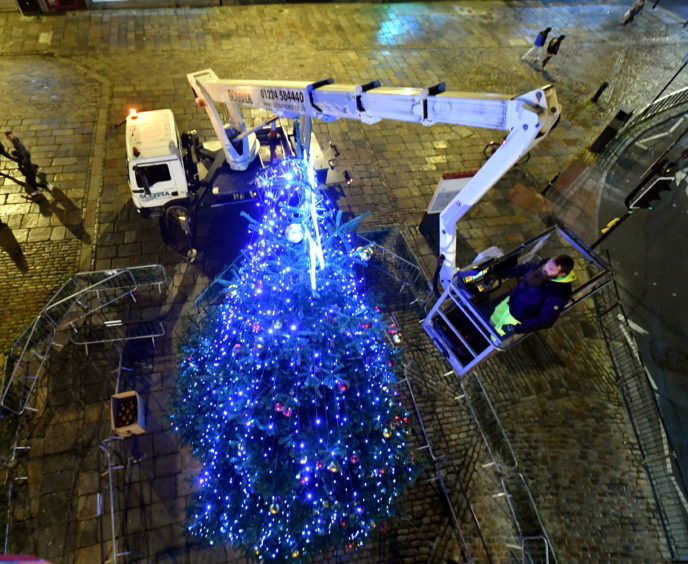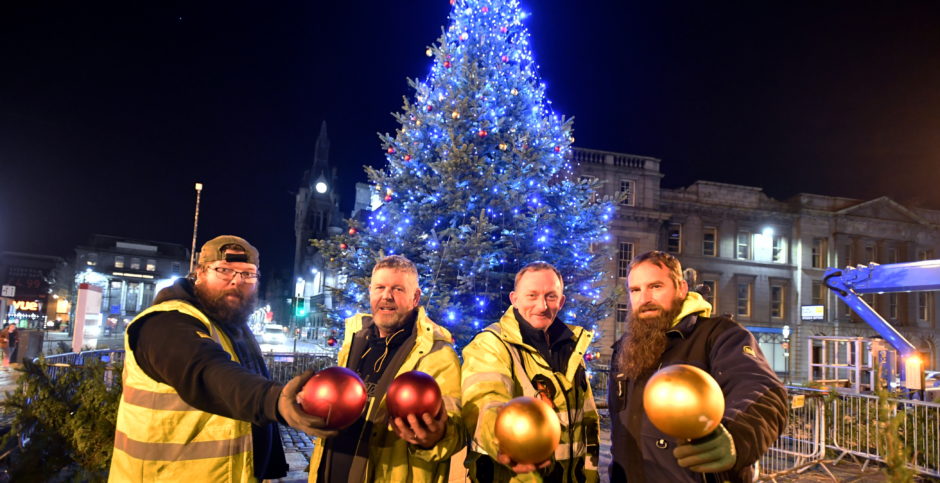The scent of pine needles and twinkling fairy lights never fails to warm the heart, even for the Scrooges among us.
Instantly recognisable as a sign that the festivities are underway, the humble Christmas tree is a cherished tradition which has been taking place for hundreds of years.
The custom was developed in Estonia and early modern Germany, when Protestants brought decorated trees into their homes.
The tree was traditionally decorated with roses made from coloured paper, apples and sweetmeats.
In the 18th Century, it began to be illuminated by candles, which were then replaced by Christmas lights with the invention of electricity.
Plenty of family arguments have occurred over the size of tree, positioning of baubles and the tangled lights which were hastily put away last year.
But for many people, the decorating of a tree offers a nostalgic look at Christmas past.
Decorations are kept and even handed down through the generations, and soft needles are hoovered up long after the big event has passed.
Aberdeen is no different when it comes to the importance of tradition, with the Castlegate tree arriving by boat from Norway each year.
It sets foot, or rather trunk, on north-east soil during the last two weeks of November, to allow for a decorating team to dress its branches.
There is an impressive 250 baubles to be equally distributed and carefully hung, so as to prevent one side looking bare.
And if you’ve ever cursed a few faulty fairy lights, spare a thought for the team responsible for 2,500 lightbulbs.
This year’s tree is a Nordmann Fir, which is one of the most popular Christmas tree types in the UK.
The Granite City first received a Christmas tree as a gift from Stavanger in the 1970s, but the annual tradition did not commence in earnest until 2005.
It stands as a celebration of the twinning agreement, after Aberdeen twinned with Stavanger in 1990.
The unenviable task of making sure the tree arrives not only on time, but in good condition, partly rests on the shoulders of Alasdair Wilson, who is assistant arboricultural officer for Aberdeen City Council.
He is ready and waiting for the tree when it arrives at the harbour, and is particularly taken by this year’s offering. “It really is a stunner,” said Alasdair.
“You want something that has been grown in the open. It means it hasn’t had to compete for space, and it has a nice full crown.
“The tree is inspected for any pests before it even leaves the harbour, and we also look at how tall it is.
“This year I think it is measuring about 30 feet.
“We have to consider how tall it will be when we sink it into the ground.”
The tree is then transported to Castlegate and decorated by contractors, as a cherry picker is required to reach the higher branches.
But what happens when December 25 has been and gone, and people start to look ahead to the new year?
Unfortunately it’s not quite as simple as storing the tree in the loft, or planting it in the garden.
That does not mean to say that the tree goes to waste, however.
“It is shredded, and it can even make it as far as Inverness,” said Alasdair.
“This is because it can be used as biomass fuel, and even goes on to produce electricity.
“We would expect the tree to stay green for around three to four months after it has been cut down.
“This type of tree gives a nice full canopy.
“There’s no escaping Christmas trees at home, as my other half likes to have a nine-foot tree in the kitchen.
“I look forward to this time of year though, and to seeing the tree arrive.
“I think it’s a popular sight when you’re coming into the town to do your shopping.
“It’s something different in comparison to the rest of the year, you can’t help but smile when the tree is all lit up.”

